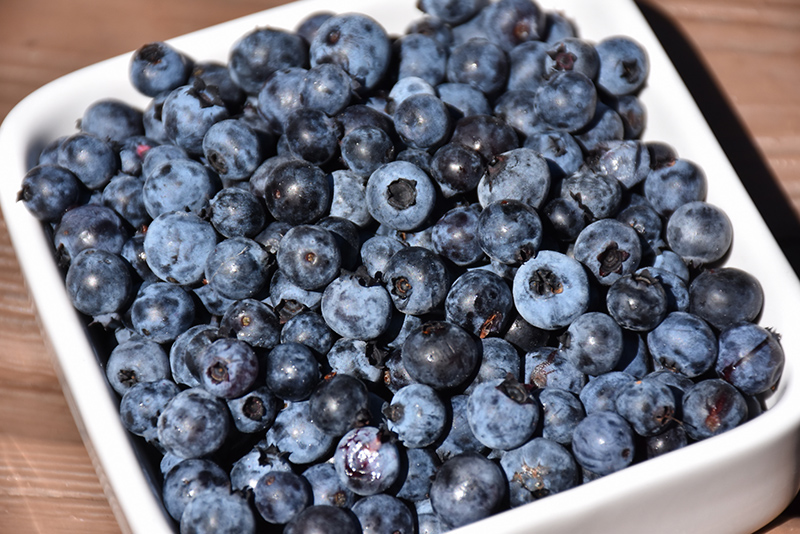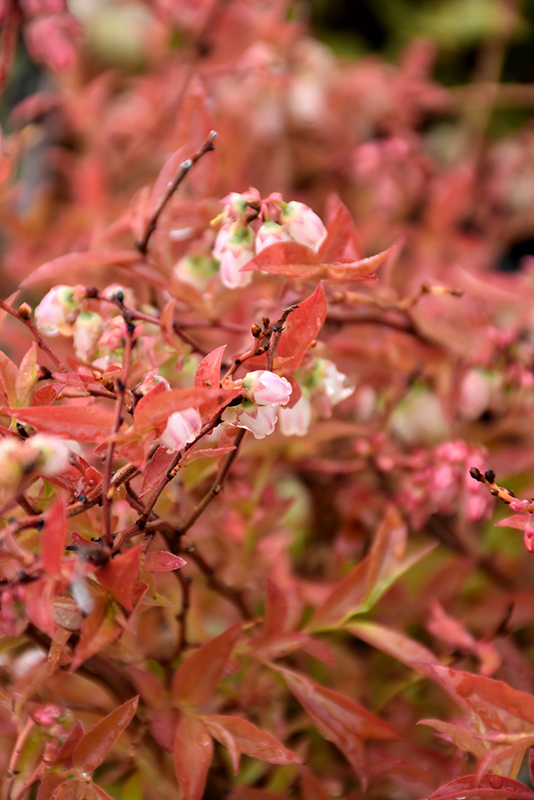>> Home
Burgundy Lowbush Blueberry
Vaccinium angustifolium 'Burgundy'
Height: 12 inches
Spread: 3 feet
Sunlight:
![]()
![]()
![]()
Hardiness Zone: 3
Description:
Pretty urn-shaped flowers in spring followed by extremely flavorful small blue berries; distinctive burgundy new growth matures to gray-green, then orange-red in fall; a great groundcover or low border
Edible Qualities
Burgundy Lowbush Blueberry is a small shrub that is typically grown for its edible qualities, although it does have ornamental merits as well. It produces clusters of blue round berries which are usually ready for picking in mid summer. The berries have a tart taste and a firm texture.
The berries are most often used in the following ways:
- Fresh Eating
- Cooking
- Baking
- Preserves
Features & Attributes
Burgundy Lowbush Blueberry features dainty clusters of white bell-shaped flowers hanging below the branches in mid spring. It has grayish green deciduous foliage which emerges burgundy in spring. The oval leaves turn an outstanding scarlet in the fall. It features an abundance of magnificent blue berries in mid summer.
This is a spreading deciduous shrub with a spreading, ground-hugging habit of growth. Its relatively fine texture sets it apart from other landscape plants with less refined foliage. This is a relatively low maintenance plant, and usually looks its best without pruning, although it will tolerate pruning. It is a good choice for attracting birds to your yard. It has no significant negative characteristics.
Aside from its primary use as an edible, Burgundy Lowbush Blueberry is sutiable for the following landscape applications;
- Mass Planting
- Groundcover
- Naturalizing And Woodland Gardens
- Orchard/Edible Landscaping
Planting & Growing
Burgundy Lowbush Blueberry will grow to be about 12 inches tall at maturity, with a spread of 3 feet. It tends to fill out right to the ground and therefore doesn't necessarily require facer plants in front. It grows at a medium rate, and under ideal conditions can be expected to live for approximately 20 years. While it is considered to be somewhat self-pollinating, it tends to set heavier quantities of fruit with a different variety of the same species growing nearby.
This shrub can be integrated into a landscape or flower garden by creative gardeners, but is usually grown in a designated edibles garden. It performs well in both full sun and full shade. It does best in average to evenly moist conditions, but will not tolerate standing water. It may require supplemental watering during periods of drought or extended heat. It is very fussy about its soil conditions and must have sandy, acidic soils to ensure success, and is subject to chlorosis (yellowing) of the foliage in alkaline soils. It is quite intolerant of urban pollution, therefore inner city or urban streetside plantings are best avoided, and will benefit from being planted in a relatively sheltered location. Consider applying a thick mulch around the root zone in winter to protect it in exposed locations or colder microclimates. This is a selection of a native North American species.

